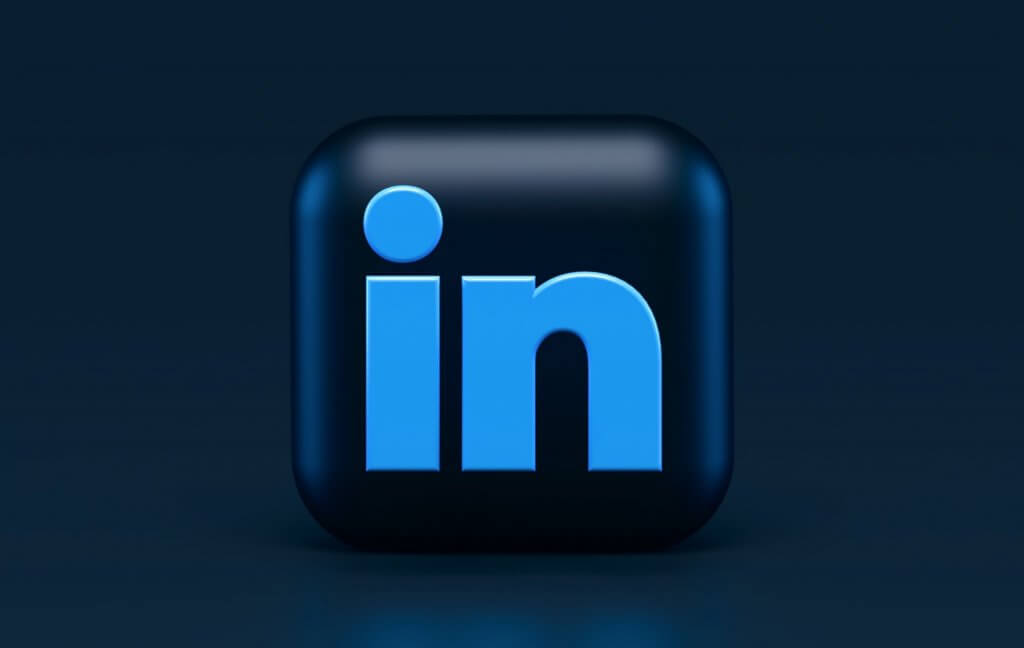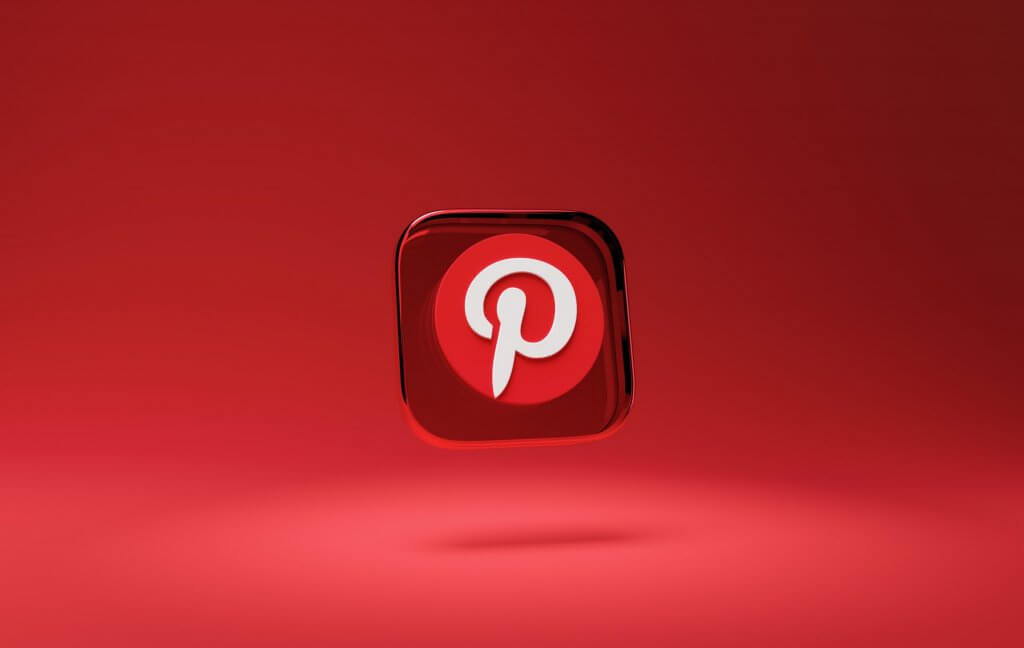Social selling is the art of leveraging your brand, positioning, and content to build an audience on social media. A social selling strategy helps you build up credibility while simultaneously targeting key touchpoints for your ideal buyer to sell your service or product to them.
There are a few key elements that make up social selling:
Branding: Cementing your positioning within your industry requires strong and consistent branding across all profiles. Your logo, colours, tone of voice and more make up your brand and help create an instantly recognisable perception among your audience.
Target Audience: If you try to sell to everyone, you sell to no one. Social selling relies on your ability to hone in on those that buy from you. Once you know this, you can create content and sell directly to those people.
Engage with content: Content makes up the backbone of social media, with more users engaging with brands now than ever before. Creating consistent, valuable content helps keep your brand top of mind while placing your product or service in front of potential buyers.
Building relationships: Social media should be, well, social! Business relationships pave the way for effective cross-audience marketing and pave the way for mutually beneficial collaborations. Product based businesses can build up a reputation for interacting with their audience, generating further goodwill and brand recognition.
The Main Difference Between Selling Products and Services on Social Media
The methods you’ll use to sell on social media will change depending on what you’re selling. Product-based businesses will find a plethora of tools at their disposal to manually tag products, link directly to store pages and more. In contrast, service-based companies may find that they’ve drawn the short straw.
Service-based businesses rely more on conversing with their audience and making sales through direct communication. Social channels would have difficulty facilitating in-built processes to sell unique and bespoke services due to the inability to quality check what is being sold.
Thus, product-based businesses can sell directly on many mainstream social media platforms. At the same time, service-based companies will apply the same strategies across all platforms to build their audience and make sales.
How to Sell Using Your Brand on Social Media
Your brand should be the centre point for your marketing. Each piece of content you publish, each conversation you have and every product or service sold impacts your brands reputation.
The principles of social selling are crucial for ensuring your brand’s reputation isn’t tarnished, as simply appearing on social media and pushing sales posts will rarely be fruitful. People love to buy but don’t like to be sold to. So, instead of consistently making sales content, we can be sneaky and work on other areas to help sway potential buyers to our brand instead of a
competitors.
Below are some essential activities you can do on social media to help you sell your products and services more efficiently.

Create a Solid Foundation Through Your Profiles
Your profiles create the foundation upon which your content can build. Without a strong profile, viewers won’t fully understand you, your brand or the purpose of what you’re selling.
What you can include on your profile varies depending on the social platform. Twitter, for example, only allows you to edit your profile picture, name, cover photo and small about section. In contrast, LinkedIn will enable you to create an entire page’s worth of information. A completed profile, in most cases, will increase the credibility of your brand and is sometimes necessary to run ads.
Consider thinking about what your audience will need to know about you to make a solid & confident purchasing decision. You can include a website as your main URL link on your pages and direct users there if you have a website that converts. However, if your website isn’t in tip-top shape, including more detailed information on your page is the best workaround.
When creating your profile – or editing it – make sure not to miss a section out and leave gaps. Most in-built social search tools rely on the information present on your profile, so having more relevant information increases the likelihood of being found.
Start Creating Valuable, Engaging Content
Profile aside, users will primarily find you through your content. Whether posting videos, text-only posts or images, content allows you to showcase your industry knowledge.
While you can use any type of content, here are some excellent ideas:
- Informational, how-to content
- Story-based content
- Insight into your business
- Meme content
- User-generated content (UGC)
- Client testimonials and reviews
One crucial element to your content should be making it personable. Personality is the fuel of social media; user attention wavers when they feel like they’re speaking to a robot.
You can experiment with these content ideas and find what works best for your specific business, including what is easiest for you to create.
Finding the content type you enjoy creating the most might be one of the most important aspects of content creation which is often overlooked. Content is most effective when it is consistent. Social media platforms favour consistent uploaders, with their algorithms pushing the content to more users.
Similarly, more consistent content means your users will see your brand more, and these consistent touch points allow your brand to become a well-known name in your space.
Creating consistent content is challenging when you aren’t enjoying the content creation process.

Join Conversations Around Your Niche/Industry
Using social media as a passive tool doesn’t work anymore. Algorithms no longer focus on the users as a whole and instead favour the users that use the platform the most.
Consistent content is essential for that reason, but so is engaging with other users on the platform. Engaging with other users does two things:
- Keeps your profile active for the algorithm (useful for platforms like LinkedIn)
- Allows you to build relationships, but also to appear in front of more users
One overlooked benefit of engaging on social media is the ability to be seen by more users and have them come to your profile.
But, let’s be clear, this does not mean spamming other profiles and content.
Instead, leave valuable comments and insight on relevant content in your industry. No one gains value from “great post!” but they do if you’re able to add something to the conversation in an authentic way.
Choose the Right Social Platform(s) For Your Business
It seems like there is a new social media platform popping up every other month.
Truth is, you don’t have to be on every platform you see. In actuality, it’s more detrimental to be active on each platform unless you have a dedicated social media team that can keep up with them.
Stretching yourself too thin will place unnecessary restrains on your resources and make it substantially more difficult to cement a strong position. Similarly, engaging with your audience will be next to impossible unless you have four hours to dedicate to active engagement each day.
Finally, find out where your audience is.
If you aren’t currently using every platform, chances are, your audience isn’t either. The effort may go wasted, and instead, focusing on two or three platforms where your audience is active will be a far better use of your time.
You can figure this out by thinking about your niche and what type of person operates those businesses. For example, if you target business professionals and CEO level positions, LinkedIn will be one of the best platforms for you to focus on.
If, however, you work with food brands as a photographer, turning to Instagram will be a great option to showcase your abilities while engaging with relevant businesses.

Accurately Budget the Resources You Have Available
Social media is free.
Unless you plan on leveraging additional scheduling tools or opting for on-platform premium upgrades such as LinkedIn premium/sales navigator.
Yet, allocating resources to your social platforms, whether through increased output, hiring a social media manager, ads or otherwise, can drastically improve your production quality and, as a result, produce better results.
Accurately allocating a budget to your social media endeavours creates a clear picture of what your social profiles could look like, including opening up additional opportunities to take in the future.
Don’t Be Afraid to Network
Engaging with other creators can be intimidating, especially if they have a solid position on the social platform and you don’t.
This could be the primary way to generate new sales and leads, depending on your business. Business to business (B2B) is mainly conducted through direct communication channels such as the inbox or email; thus, if you run a service-based business, engaging with others is a necessary step.
If we can give you one key takeaway from this post, that would be to engage authentically.
This means communicating with others and building relationships without expecting to gain something in return. Many users on social media are quick to reach out and tell you how you need the services they offer.
This is an immediate turn-off and a quick bridge burner for any future opportunities for most.
Instead, opt to learn more about the person, what they do and how their business is performing. Engage with their content and offer valuable insight in the comments section. If the business owner needs a service, they are likely to turn to someone they have built a rapport with and have shown to know their stuff.
Having an engaging conversation directly also opens up the opportunity for deeper conversations, resulting in the sharing of business positioning and needs. Your prospect may even tell you precisely what they need without you even asking, to which you can then explain how you can help.

How to Sell Through Facebook
Facebook gives creators and business owners a wide range of tools to sell through their platform effectively. Making effective use of these tools will amplify your marketing efforts and increase the potential of your campaigns.
Selling Products Through Facebook
Facebook is geared up for products first, with most tools supporting smaller businesses. Through Facebooks Commerce Manager, you can start setting up your shop and begin populating it with the various products you have on offer. You can use this feature exclusively or sync it with an online store or platform, allowing you to make use of your online shop if you already have one through your website.
Facebook Marketplace is another great option if you’re looking to sell locally or have a product that you can ship out to buyers. There is an option to sync this with your current Facebook shop for easier use.
Finally, Facebook ads offer a more substantial opportunity to push your products to more Facebook users, with targeting options that enable you to specify who you want to target, what demographic and more. Facebook ads are essential for many product-based businesses that want to get ahead of their competition and reach a more comprehensive portion of their audience.
Selling Services Through Facebook
Selling services requires more social finesse than selling products because you can’t leverage Facebook marketplace or the shop. You can, however, continue to push Facebook ads for your services, with the call to action being to either visit your website or get in touch via your business page. This leads us to…
Your Facebook business page. A Facebook business page is required if you want to use Facebook ads. Still, it may be more important for service-based businesses where the individual or brand perception influences the purchasing decision.
We can quickly buy a £5 product but will likely need more information if we’re looking to buy a service at 200x the price.
By populating your Facebook business page with engaging, relevant and educational content, you can begin to build an audience that looks to take the extra step in learning more about the service you offer.
Additionally, you can use chatbots to strike up conversations with users and push them towards your desired call to action.

How to Sell Through Instagram
Instagram pulls similar tools from Facebook, including the catalogue and shop, allowing product-based businesses to thrive on the platform, whereas service-based businesses are left behind.
Selling Products Through Instagram
Similarly to Facebook, businesses can use Instagram shopping to showcase their products and catalogue to their audience. This comes with a helpful product tagging feature that allows you to tag an area of your image directly to one of your products. Users can then tap your photo, click the tag and go directly to that product, saving time for them and marketing for you.
Instagram Ads are another crucial element of Instagram’s ecosystem as they create a means to bypass the typical audience creation process and target your users directly.
The critical element to Instagram is to remember that it is a visual platform. Unlike LinkedIn, Instagram users are looking for visual, attractive content. Businesses looking to get ahead on this platform should consider their product and then generate ideas on presenting the product most attractively or uniquely.
Selling Services Through Instagram
Selling services is significantly more challenging on Instagram due to its visual nature. Many services are not visual-based, making it challenging to create engaging visual content from the service itself.
Thus, services like IT support, Mortgage Advisors, Accountancy and more have to rely on creativity to attract their audience. Instagram ads are an effective way to do this alongside well-crafted content. Aside from this, Instagram requires you to play the long game and build up an audience through consistent posting and engagement with other users on the platform.

How to Sell Through Twitter
Twitter was built as a social channel first, meaning that its implementation of business support is almost nonexistent. The quick, rapid-fire nature of Twitter also places a bigger emphasis on short, digestible updates rather than lengthy educational pieces.
Selling Products Through Twitter
Twitter is a unique platform in that it isn’t the first place people think of when looking to sell products or services. The reason being is that Twitter just doesn’t have the same on platform support for these activities as the other prominent players in the market.
Selling a product through Twitter is difficult – it requires you to spend time building a significant audience and then selling through the content itself, rather than through the various tools you may be used to on other platforms.
Given the fleeting nature of Twitter, many product-based businesses forgo Twitter altogether or use it passively to retain a profile.
Selling Services Through Twitter
Selling a service through Twitter is a little more justifiable due to the nature of how the platform is used – through discussion. A comment on a post is referred to as a thread, and users are incentivised to join these discussions and interact with one another.
Service-based businesses are all about networking and getting in front of as many of their target audience as they can. There is no better way to do this on Twitter than joining these discussions and providing something of value.
Yet, even being the case, we advise that you consider whether or not your audience is active on Twitter. If not, the chances of your business thriving there may be non-existent, and the time you would spend could be better placed on a different platform.

How to sell through LinkedIn
LinkedIn, in many ways, is the Instagram for service-based businesses. The platform was built as a way for business professionals to interact with one another. While the fledgling days of LinkedIn saw it being used as a glorified resume platform, it has recently become its own niche social media in its own right.
How to sell products through LinkedIn
Selling products through LinkedIn is going to be a real challenge. Selling products requires you to actively push for a sale, which LinkedIn users are against.
Most of the social selling done through LinkedIn is through direct messaging and content comment exchanges; thus, it creates a fundamental disconnect between what the users know and what they receive.
It is advised to leverage the other channels with the tools required to make a product sale successful instead of LinkedIn.
How to sell Services through LinkedIn
Service-based businesses thrive on LinkedIn due to the culture that has formed. It is expected for freelancers, business owners, upcoming trades, and more to be using the platform to sell and build relationships with like-minded individuals.
Everything about social selling will be challenged on LinkedIn, as you’ll need to create consistent, high-quality content, engage with its users and take the conversation into the inbox or offline. To start, building out a robust profile sets the foundation.
We recommend using your personal profile rather than your business profile. The reason is that LinkedIn doesn’t allow business profiles to communicate on the platform. Instead, they act as a passive profile for users to view.
Users can also benefit from tools like LinkedIn premium – to see who views your profile and other important metrics – and LinkedIn Sales Navigator, which allows you to conduct lead generation on the platform.
Finally, LinkedIn introduced ways for users to identify the services they offer directly through their profile, which creates an additional way for users to find out what you do and inquire without your direct input.

How to Sell Through TikTok
Many of us have become accustomed to the quick rise of TikTok. What started off dominated by dancing videos has quickly turned into various content styles. Businesses can leverage this to their advantage so long as they’re happy being on video.
Selling Products Through TikTok
Selling products through TikTok is relatively conventional. While you can use the platform to grow an audience through social selling, you can also add in-feed ads that push your content to your audiences for your page. These ads blend in and appear as standard videos that a user may see regardless.
TikTok, like Pinterest and YouTube, really benefits from a dedicated strategy. They can then click the call to action that pops up and be taken to a page of their choice. A standard social selling strategy you may use for Facebook or Instagram may struggle on TikTok due to the dramatic audience difference.
Many businesses have exploded in success through the effective use of TikTok sounds – sounds that users create and other users use for their videos – and through memes and funny content.
Internally, it would be beneficial to have someone on the team who uses TikTok and understands the culture.
Selling Services Through TikTok
Selling services through TikTok is slightly more challenging than selling products but requires you to use TikTok as intended. Pushing a service will require you to build up an audience through consistent video content. To do this, understanding the culture enough to create content that people want to see is the first step.
Like any other social selling, the goal is to create the audience and then throw in a content piece that generates interest around what you do every so often.
Yet, TikTok audiences can be created from any niche. Many successful profiles have grown from creating honest videos about their professions such as freelancing, office work and more. Many users relate to this, and while they may not be the target audience for sale, they push the content further.

How to Sell Through Pinterest
Pinterest has long been a platform that has seen wide use for creative subjects. Many users use the platform for inspiration & motivation and share designs and images they love. Businesses can use Pinterest to their advantage by learning how the algorithm works and how to push users to external resources.
A unique component of Pinterest is the requirement to link and verify your website. This requires you to add a meta tag or HTML file to your website. This ensures that you own the site when you’re linking back to your website as a call to action.
Selling Products Through Pinterest
Pinterest supports product-based businesses through a wide variety of tools. You’ll need to set up a business account for the marketing to run through to use these. Once your site is verified, you can link your site and products directly through your Pinterest content.
Similarly to Instagram, visuals are the key to success here, alongside various SEO tactics to get seen. Pinterest shows a significant amount of search results at a time, meaning your ability to stand out on the results page will be the difference between a potential new buyer or not.
It’s recommended for product-based businesses to use rich pins. These extract data from your website to show alongside the normal pin information and offer a shop button for users.
Similarly, you can use promoted pins to push your content to the top of relevant search results, forgoing SEO at a cost.
Selling Services Through Pinterest
Selling services through Pinterest is a challenge and one that may not be worth the direct effort of pushing the service itself through the platform. However, that doesn’t mean that service-based businesses can’t leverage the visual power of Pinterest.
Instead, consider what pillar content you have to market through the channel. Similarly, look at the content you or your team is producing and ask yourself whether or not you can create a Pinterest specific piece for it.
Remember that content can link back to any source. This makes Pinterest a great place to push blog posts, pillar pieces and core web pages to your website.
While this may not make a sale directly, it does give a user another touchpoint for your brand and business, which could put them on the right customer journey to purchase the line.

How to Sell Through YouTube
Unlike the other channels in this list, YouTube provides a somewhat level playing field for product- and service-based businesses. YouTube is the dominant platform on the market, with a monopoly on video content. YouTube strategy is often underutilised within enterprises and is a sorely missed channel from social strategy. Businesses can leverage this channel through compelling video content and intuitive marketing.
Unfortunately, there are no shortcuts when it comes to selling on YouTube. Unless you plan on sponsoring a creator – which is a viable, albeit costly tactic – the other option is to build an audience on the platform. Building a successful YouTube channel requires strong SEO, video creation knowledge and consistency.
End cards appear as the video ends and are a chance for you to push users to another video – perhaps one with a sales focus – or to another location. End cards are a great way to incentivise checking out something of relevance. It’s also important to note that these are end cards; it requires the user to sit through your entire video. These users are the best to push your other content, too, as they are the most committed to your brand.
Users can also include links in their descriptions as an additional means to catch the curious and link them to other important locations such as an email capture form, blog page, landing page and more.
Finally, if YouTube is a channel you want to invest in, you can access YouTubes internal monetisation and begin monetising your content with ads once a channel is built up. While a small income source, in the beginning, consistent uploading and growth can create a stable income channel in the future.
